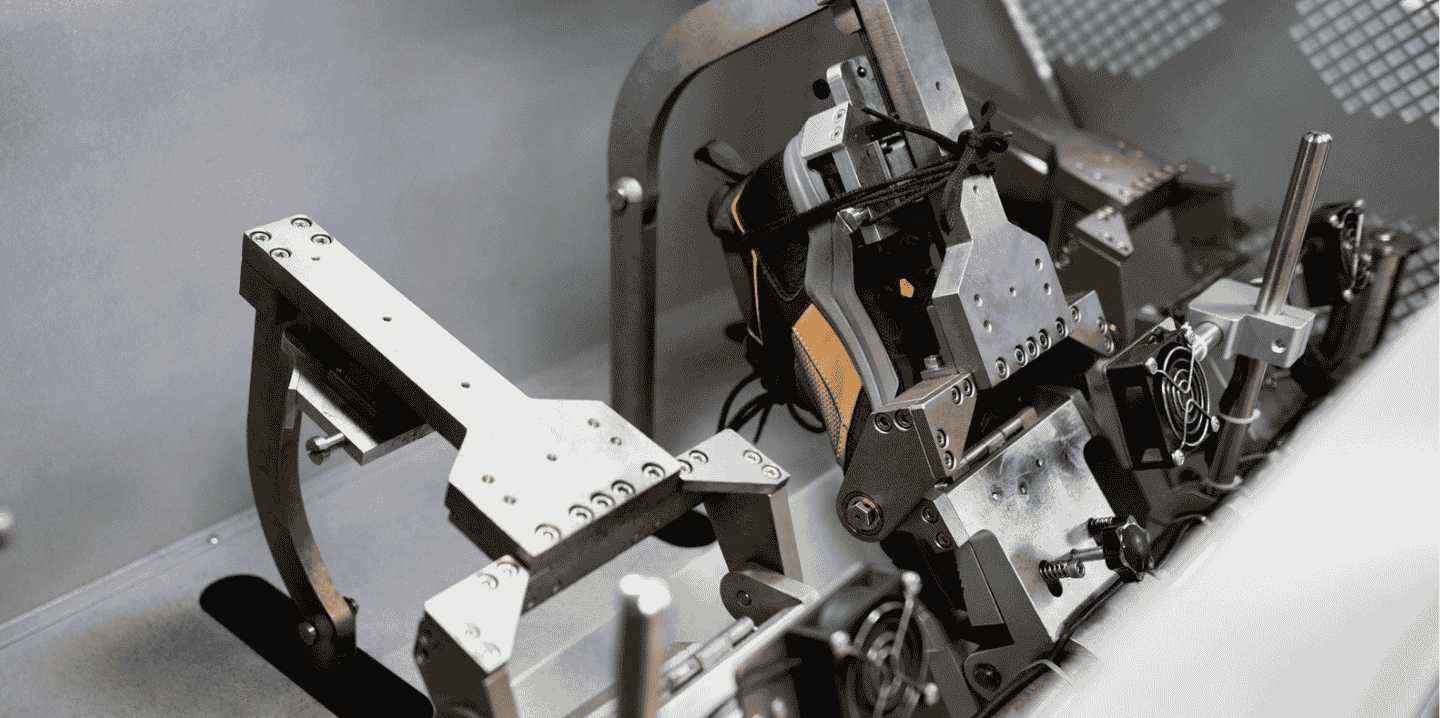The flexing resistance test measures a shoe’s ability to withstand repeated stress during walking, identifying potential weak points such as sole cracks, separation between the upper and sole, or damage to the upper materials.
Performing flexing resistance tests allows footwear manufacturers to improve material and construction quality, ensuring more durable and comfortable products. Our laboratory conducts these tests according to international standard ISO 24266, using advanced machinery to deliver reliable and repeatable results.
Test Objective
The objective of the test is to simulate the stresses a shoe undergoes during normal use by reproducing the repeated flexing of the foot. The test allows for:
Assessing the resistance of the upper, sole, stitching, and bonding to cyclic stress
Identifying cracks, splits, or detachment between materials
Improving footwear design and material selection
Applicable Standards
The flexing resistance test is carried out in accordance with ISO 24266, which includes two methods:
Method A: Flexing with an empty shoe
Method B: Flexing with a last inside the shoe – Also used in Chinese standard QB/T 3903.1
Standard Limitations
Not applicable to footwear with heels higher than 70 mm
Not applicable if the sole is thicker than 25 mm in the flexing area
The test is not valid if the footwear is too rigid (rigidity is measured beforehand using a specific dedicated method)
Test Procedure
Sample Preparation:
Before testing, the footwear sample is prepared following a standardized protocol:
Conditioning: The sample is stabilized in a controlled environment to ensure uniform temperature and humidity conditions
Footwear Selection: The sample must be representative of the production line and free from manufacturing defects that may skew the results
Marking the Natural Flex Line: To ensure the test is performed in the most critical bending area
Testing Equipment
The test is performed using a flexometer for finished shoes, a device designed to simulate repeated flexing through a controlled mechanism.
The equipment consists of:
Mechanical arms that secure the shoe and repeatedly bend it along its natural flex line
Flex angle control to ensure the test follows the parameters set by the standard
Cycle counter to measure the number of flexes performed
Flexing speed control
Test Execution
The footwear is subjected to repeated flexing for a predetermined number of cycles.
The shoe is secured in the machine according to its natural flex line
The flexometer performs repeated bending up to 50,000 cycles (according to ISO 24266 – Method A)
After the test, the shoe is inspected for visible damage, such as:
Cracks in the sole
Separation between upper and sole
Tears or deformations in the materials
Method B – Chinese Standard QB/T 3903.1
Method B from ISO 24266 is also adopted in the Chinese standard QB/T 3903.1, which includes specific parameters for flexing resistance:
The test is performed on a complete shoe, using a special flexible last inside the footwear
The flex angle and number of cycles may vary depending on the shoe type
This method is particularly used to assess shoes intended for the Asian market, ensuring compliance with local requirements
Results Interpretation
A shoe is considered compliant if, at the end of the test, it shows no visible damage after the required number of cycles. If issues appear, they may indicate:
Cracks or breaks in the sole: May require improved sole materials or design
Separation between upper and sole: Could signal weaknesses in adhesives or assembly methods
Material damage: May suggest the use of inadequate or overly rigid materials
Importance of the Test for the Footwear Industry
Performing the flexing resistance test is essential to:
Increase footwear durability and extend product lifespan
Improve user comfort by reducing the risk of premature failure
Achieve compliance with international standards, crucial for global market sales
Optimize shoe design, enabling manufacturers to select the best materials
The flexing resistance test is a key analysis for determining footwear quality and durability. In our lab, we use advanced equipment and strictly follow ISO 24266 standards to ensure reliable results for footwear brands and manufacturers.
If you’d like to test the flexibility and durability of your footwear, contact us for a personalized consultation!

